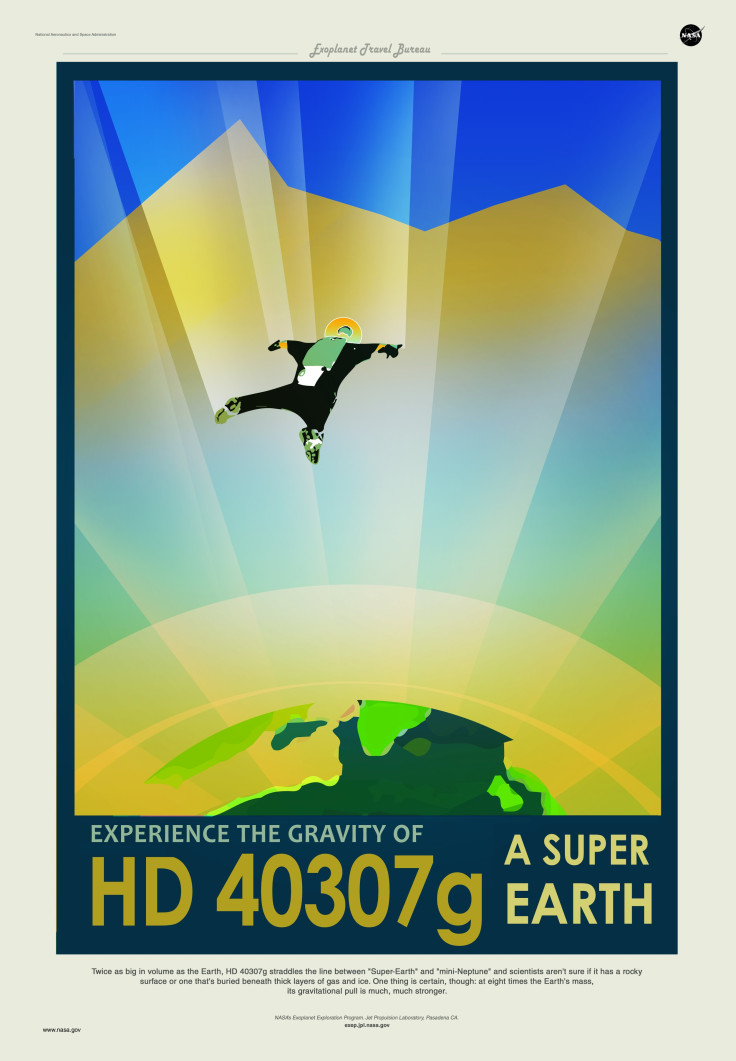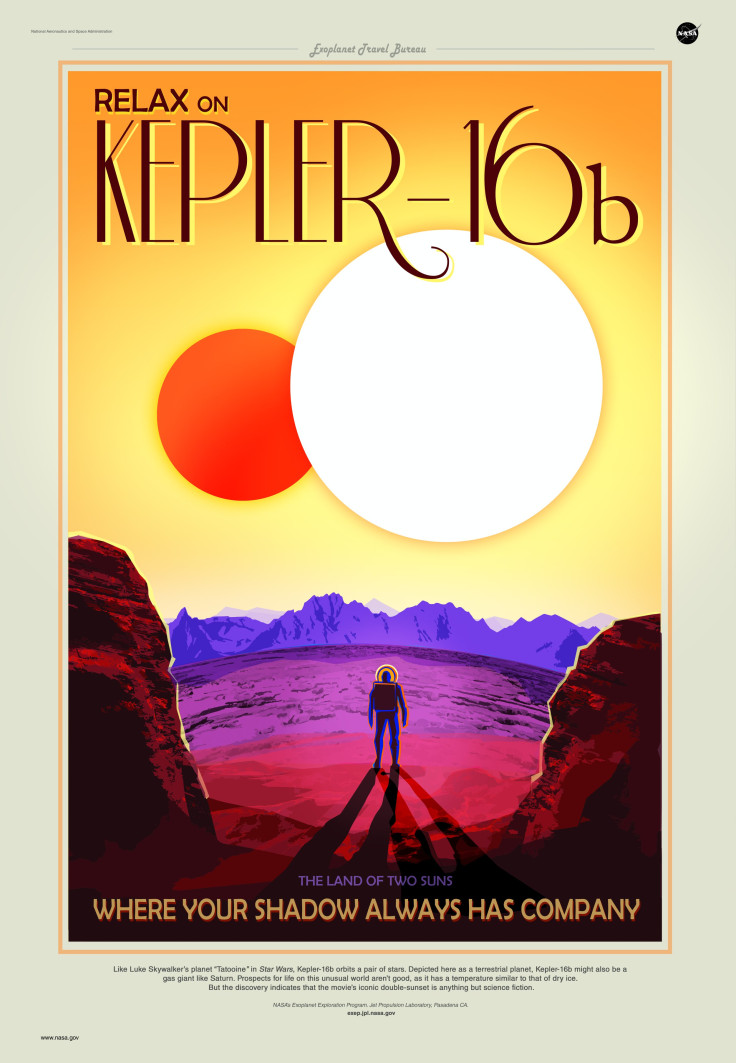NASA's Old School Exoplanet Travel Bureau Posters Are So Great, You'll Want To Frame Them

NASA has a launched a line of exoplanet travel bureau posters that are simply out of this world. The artworks were inspired by vintage travel posters and give a glimpse of what life might be like on Kepler-186f, HD 40307g and Kepler-16b.
What would it be like to visit our Earth-like "cousin" Kepler-186f? The exoplanet (a planet orbiting a star that's not our sun) was discovered by NASA's Kepler spacecraft in April and instantly jumped to the top of the list of planets most likely to be habitable. Kepler-186f is located 490 light-years from Earth and orbits a cool red dwarf star. It was found in the "Goldilocks" zone of its host star, the area where temperatures are neither too hot nor too cold to sustain liquid water. The exoplanet is likely to be rocky and is just 1.1 times the size of Earth. Kepler-186f orbits its star once every 130 days. Its days would likely resemble a cool spring day, while light from the red dwarf would lead to very different vegetation than what is found on Earth.

There is plenty of mystery surrounding HD 40307g. The exoplanet is one of six orbiting the star HD 40307 and is in the star's habitable zone. HD 40307g is eight times more massive and at least twice the size of Earth. It's located 42 light-years away in the constellation Pictor. Its composition and atmosphere are still unknown; it may or may not be rocky. The planet receives almost as much light as Earth and is not tidally locked, meaning it is likely to rotate like our planet.

Kepler-16b has something the other exoplanets cannot offer: a double sunset! The exoplanet, discovered in 2011 by the Kepler spacecraft, is unlikely to be habitable but could provide a unique travel experience. The Saturn-size planet may be a gas giant and too cold to sustain life, but it's still exciting. "Given that most stars in our galaxy are part of a binary system, this means the opportunities for life are much broader than if planets form only around single stars," William Borucki, principal Kepler investigator, said in a statement. "This milestone discovery confirms a theory that scientists have had for decades but could not prove until now."
Hopefully NASA will keep the exoplanet travel bureau going and create posters based on new exoplanet discoveries. Two candidates could be Kepler-438b and Kepler-442b. The exoplanets are likely to be rocky and were found in the habitable zone of their respective host stars.
© Copyright IBTimes 2025. All rights reserved.






















